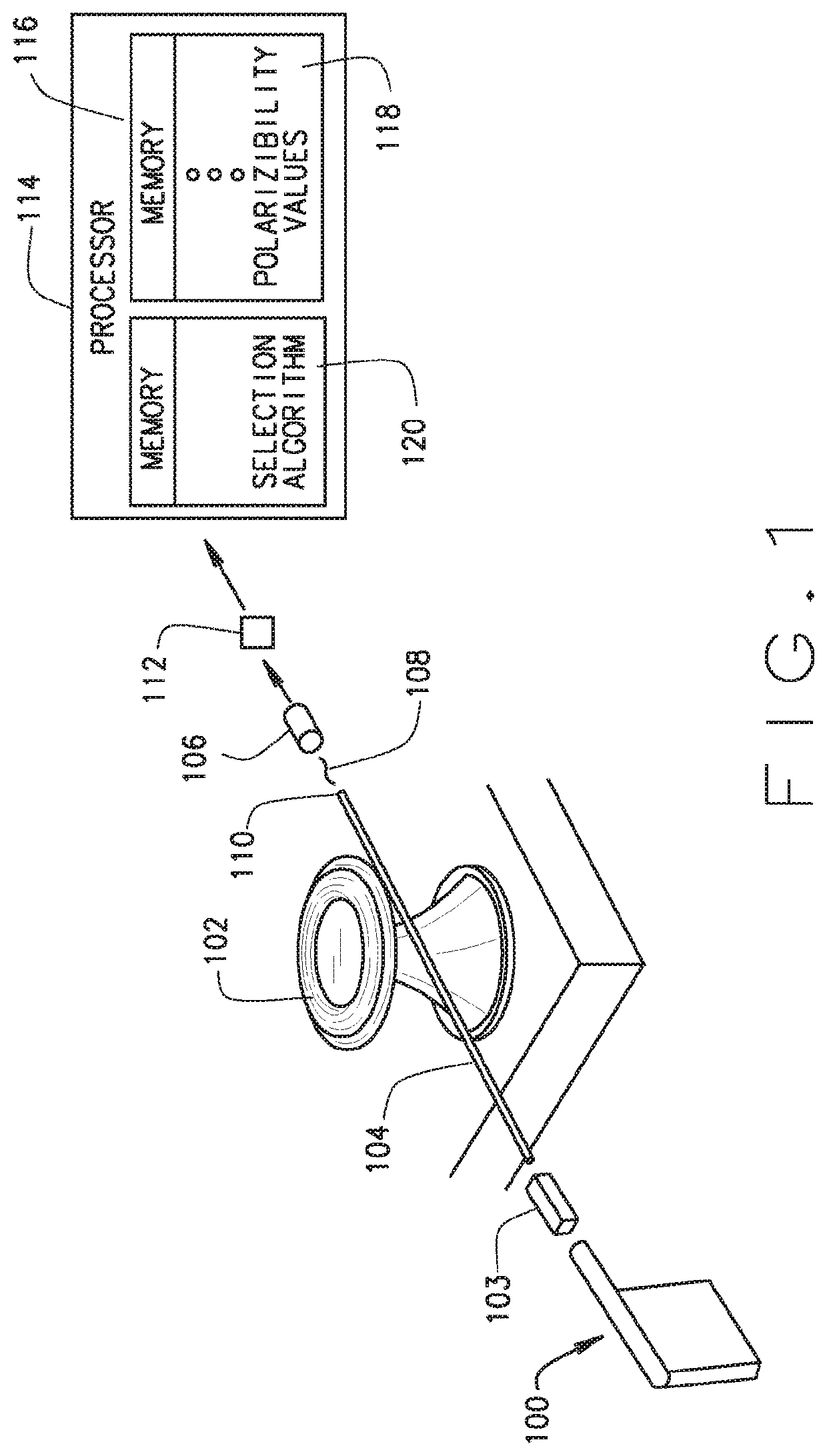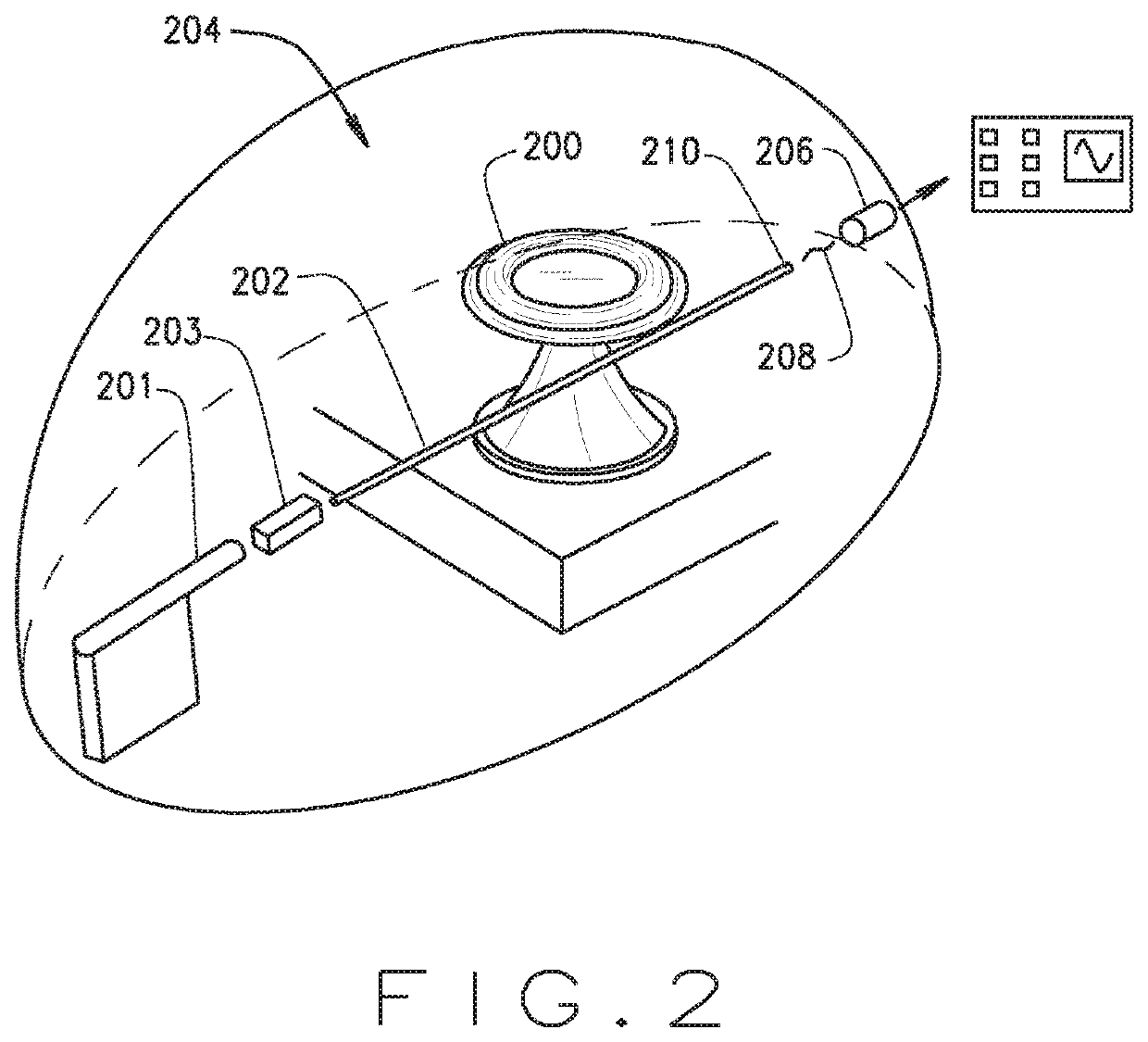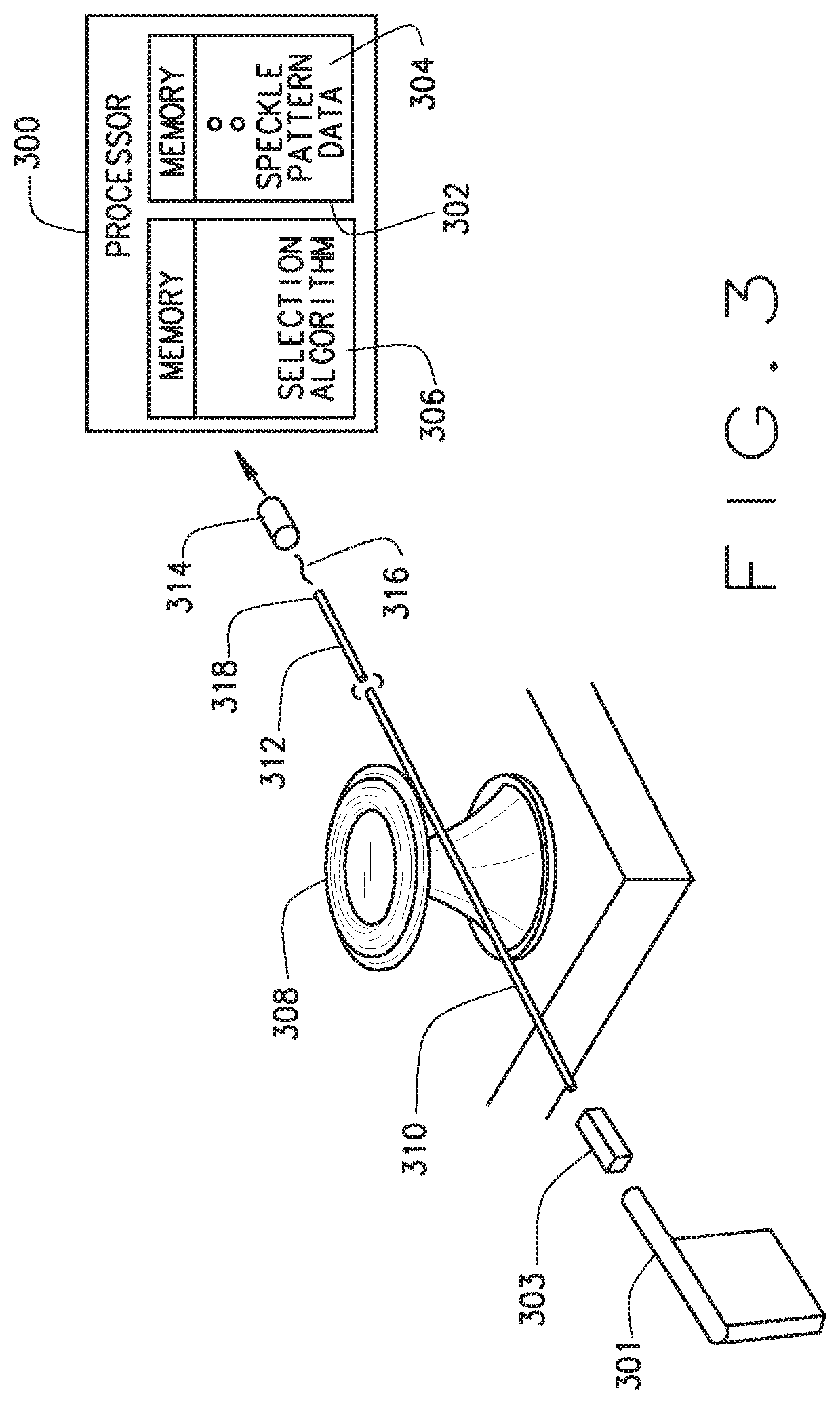At least some known particle detection systems use conventional microscopic techniques which, despite their high sensitivity and resolution, may not be suitable for field measurements due to their expensive and bulky constructions, long
processing times, and the necessity of pretreatment (labeling with fluorescent dyes, etc.) of the particles.
These sensors generally require a
fiber taper to couple the light into and out of the
resonator from a
tunable laser, whose
wavelength is continuously scanned to monitor the changes in the
resonance modes, thus making these highly compact and sensitive sensors relatively expensive.
Constructive or destructive interference between multiple reflections between two or more reflecting surfaces can occur.
However, decreasing the
resonator size below a critical value inevitably increases bending losses and eventually decreases Q. Instead,
hybrid systems combining high-Q WGMs with highly confined (small-V) localized plasmons have been demonstrated, achieving detection of single proteins and very small viruses.
Use of dopants make the fabrication process complicated (i.e., one has to find ways of
doping the resonators), costly (rare-earth ions,
quantum dots and dyes are expensive, and new fabrication processes add to the cost) and introduce
biocompatibility issues.
However, fabricating WGM-
plasmon hybrids and active WGMRs with dopants introduces additional
processing steps and costs.
For example, WGM-
plasmon hybrids require preparation and adsorption of plasmonic nano-structures onto the resonator surface, and active resonators suffer from the fact that most rare-earth ions are not biocompatible and that for each different
wavelength band of operation a different rare-earth
ion and a different pump
laser should be used.
Meanwhile, nanoparticles generated by vehicles and industry have become recognized as potential threats to health and environment.
However, their widespread use has been limited by bulky and expensive
instrumentation, long
processing time, and / or the need for labeling.
Light scattering techniques, while suitable for
label-free detection, are hindered by the extremely small scattering cross-sections of single nanoparticles.
At least some known particle detection systems use conventional microscopic techniques which, despite their high sensitivity and resolution, may not be suitable for field measurements due to their expensive and bulky constructions, long processing times, and the necessity of pretreatment (labeling with fluorescent dyes, etc.) of the particles.
These sensors generally require a
fiber taper to couple the light into and out of the resonator from a
tunable laser, whose
wavelength is continuously scanned to monitor the changes in the
resonance modes, thus making these highly compact and sensitive sensors relatively expensive.
Use of dopants make the fabrication process complicated (i.e., one has to find ways of
doping the resonators), costly (rare-earth ions,
quantum dots and dyes are expensive, and new fabrication processes add to the cost) and introduce
biocompatibility issues.
Therefore, doping silica WGM resonator with a rare-earth-
ion destroys biocompatibility.
However, decreasing the resonator size below a critical value inevitably increases bending losses and eventually decreases Q. Instead,
hybrid systems combining high-Q WGMs with highly confined (small-V) localized plasmons have been demonstrated, achieving detection of single proteins and very small viruses.
However, fabricating WGM-
plasmon hybrids and active WGMRs with dopants introduces additional processing steps and costs.
For example, WGM-plasmon hybrids require preparation and adsorption of plasmonic nano-structures onto the resonator surface, and active resonators suffer from the fact that most rare-earth ions are not biocompatible and that for each different
wavelength band of operation a different rare-earth ion and a different pump
laser should be used.
Controlling and reversing the effects of loss in a
physical system and providing sufficient
gain to overcome losses can
pose a challenge with any
physical system, particularly in optical systems.
Chaos involves hypersensitivity to initial conditions of the system and introduces unpredictability to the system's output; thus, it is often unwanted.
Small differences in initial conditions (such as those due to
rounding errors in numerical computation) yield widely diverging and random outcomes for such dynamical systems.
In other words, the deterministic nature of these systems does not make them predictable.
Again, chaos is usually perceived as not being desirable.
Therefore, using chaos, for example, to induce
stochastic resonance in a physical system has not been significantly explored.
However, again, chaos has been perceived to be undesirable in such systems.
Despite recent progress and interest in the involved nonlinear dynamics, optomechanical chaos remains largely unexplored experimentally.
However, in addition to fabrication challenges, two problems encountered by at least some known ADFs including WGM resonators are the non-unitary add-drop efficiencies and differences in the efficiencies and crosstalks of the add and drop channels.
Accordingly, current technologies may suffer from significant
crosstalk and low drop efficiency, resulting in relatively high losses.
Furthermore, at least some known ADFs are not optically tunable.
 Login to View More
Login to View More 


